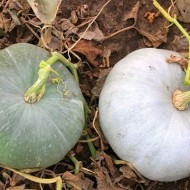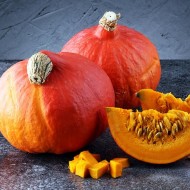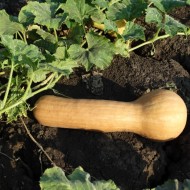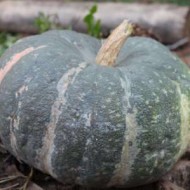Features of planting and growing butternut pumpkin: recommendations of the pros
Content
Description and characteristics of butternut squash
Pumpkin got its name from the nutmeg smell emanating from the pulp of the fruit. It cannot be confused with other types of pumpkins because of the stem, which is shaped like a pentahedron. Outwardly, the fruit resembles a pear, cylinder, oval, sometimes it is rounded.
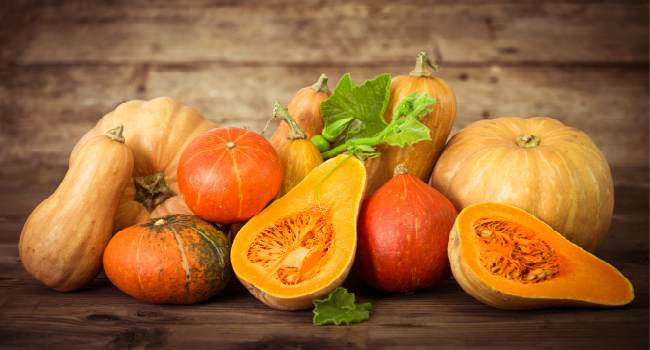
Pumpkin varieties are distinguished by a long ripening period (110–120 days) and a lack of bush forms.
The outer shell of the pumpkin has a yellow-brownish tint. Fruit sizes vary by cultivar and range from medium to large. The pulp of the pumpkin immediately after harvest is characterized by pallor, richness and sweetness come in the process of maturation. The people called the culture "winter".
Suitable region and climate
Butternut squash takes a long time to ripen. Landing is carried out in southern latitudes, where summer comes early and lasts until late autumn. Growing pumpkin requires a warm, moderately humid climate with ample sunlight.
Beneficial features
Muscat varieties have the following qualities:
- a low-calorie product that is actively used in diet therapy;
- pumpkin eliminates puffiness due to its diuretic properties;
- high content of potassium and magnesium increases the tone of the heart muscle, and carotene affects visual acuity.
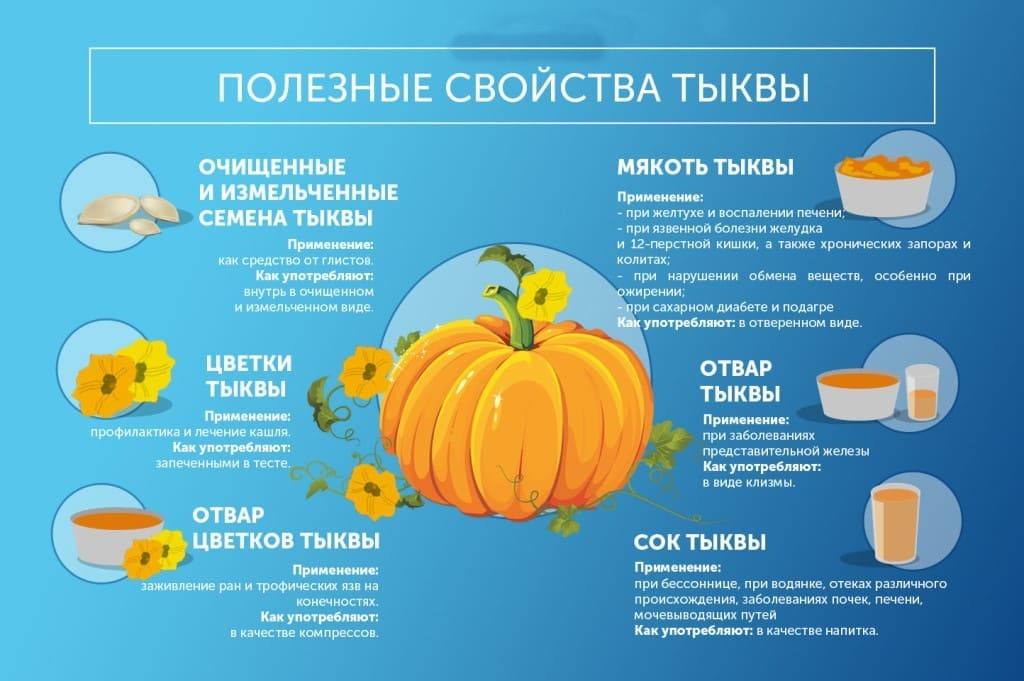
Productivity and use of fruits
The butternut squash is ready for harvest when the outer shell hardens, sometimes its color changes. It is worth choosing a dry, sunny day and not delaying until the onset of frost. Frozen peel darkens, rots and deteriorates. It is recommended to cut with a sharp knife; heavily soiled fruits are wiped with a damp cloth.
Store pumpkin at room temperature for no more than 3-12 months, preferably in closets, cellars, sheds. It is worth putting the fruits in boxes or wooden shelves; on a concrete surface, the peel will instantly deteriorate.
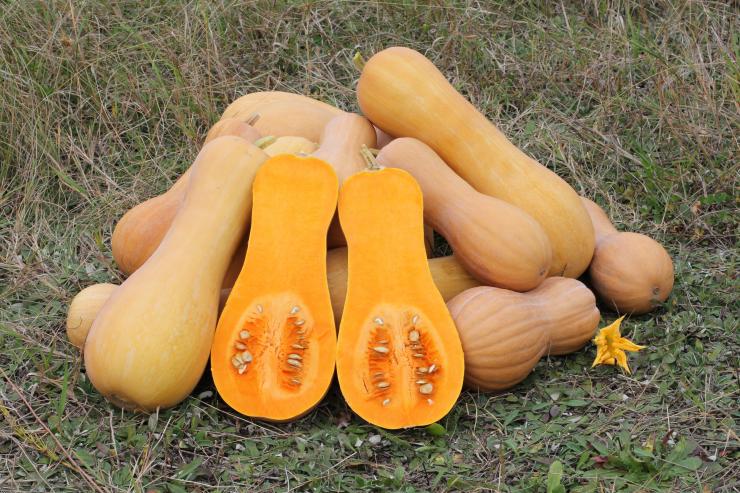
- the presence of early maturing varieties;
- drought resistance;
- ease of pollination;
- rapid formation of buds and ovaries;
- long period of flowering and fruiting.
- predisposition to fungal diseases;
- exactingness to thinning;
- difficult seed germination in some varieties.
Video "Varieties of butternut pumpkin"
This video features the most common varieties of butternut squash.
The best varieties of butternut squash
The description of the culture will be incomplete without mentioning the most popular varieties that will delight the gardener with a rich harvest.
Arabat
A large-fruited variety with a medium-late ripening period and the ability to grow in open ground. The fruit is characterized by a thin light orange skin, dense and aromatic core. The storage period is no more than 4 months.
Pearl
Medium late culture with round-cylindrical orange fruits. Seeds planted in open ground bear fruits weighing up to 8 kg. The pearl is frost-resistant and requires additional fertilization with organic substances.
Vitamin
Late variety, ready to harvest after 140 days. Fruits are oval-elongated, brown peel with yellow-pink splashes. Pumpkin Vitamin has a juicy, crispy, sweetish taste with orange pulp.
Provencal
Mid-season with a growing season of 120 days and weighing up to 8 kg. The fruit is characterized by a matte orange rind with bright orange flesh. The intensity of the palatability increases during storage.
Provencal pumpkin is recommended for desserts, juices and candied fruits.
Honey princess
The main difference between the variety is its size, so the distance between the holes should be at least 100 cm. A mid-season variety with a growing season of 115 days. The fruits are distinguished by bright orange pulp, sweet in taste. The culture is resistant to diseases and sudden changes in air temperature.
Muscat
The variety is late, the fruits ripen on the 140-150th day of the growing season. The cultivation and care process is carried out after planting seeds in open ground. Due to its orange, juicy, aromatic and crunchy pulp, it is suitable for making vitamin juices.
Muscat de Provence
Medium late culture, ripens on 115–120 days of vegetation. It has a firm skin that extends the shelf life and preserves the taste of the fruit. Muscat de Provence forms pumpkins weighing up to 8-10 kg. The pulp is characterized by a distinct honey flavor.
Hokkaido
A favorite variety among gardeners due to its early maturity. Fruits of various shapes reach small sizes (from 700 g to 2.5 kg). It tastes like red potatoes or chestnuts.
Spanish guitar
Pumpkins reach 1 m in length and 5-10 kg in weight. The fruits are covered with a yellowish-green peel, and inside there is an orange pulp with the taste of carrots. Pumpkin guitar looks like a squash.
Bylinka
The variety stands out for its flat fruits with a gray skin that brightens as it ripens. Ideal product for dietetic food.
Vita
Mid-season plant, ready to harvest on day 115 of the growing season. Differs in gray skin, juicy, orange pulp.
Prikubanskaya
Medium late species, maturing 114–140 days after disembarkation. Fruits are small, weighing up to 2.5 kg and thin skin. The Kuban variety differs from its congeners in a pear-shaped form.
Marble
Mid-season (130 days) pumpkin with round, slightly flattened fruits. The skin is marbled with green and gray tints. Suitable for long-term storage, not prone to cracking.
Golden pear
Bright orange teardrop-shaped fruit. The pumpkin reaches a mass of 2 kg in 95 days. The pulp stands out with an orange tint with a characteristic chestnut flavor.
Augustine
High fruiting culture. You can harvest on 105 days of growing season. Cylindrical fruits with green skin, decorated with light spots. Served raw or added to pancakes, mashed potatoes and cereals.
- Bylinka
- Provencal
- Hokkaido
- Prikubanskaya
- Marble
- Vitamin
Features of planting and growing
Choosing the right variety is the first step in a long-term growing process.
Site selection and landing time
Pumpkin is demanding on the sun and heat.It is recommended to plant seeds or seedlings in higher elevations to avoid moisture stagnation. The site is selected without shading, since this will reduce or completely deprive the plant of the possibility of fruiting.
The optimal planting period is the first days of June. This will protect the plant from possible late frosts.
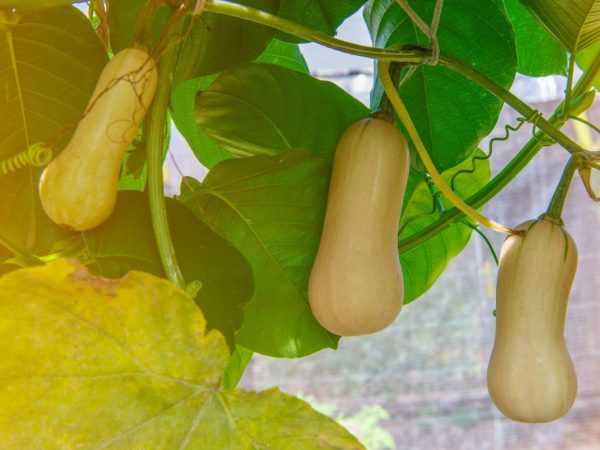
Preparing the beds
The planting site should be cleared of weeds, saturated with organic fertilizers and divided into free-standing holes. Each of them is covered with rotted manure and compost.
The best solution would be to arrange a compost pit near the plantings.
Seed preparation and planting
The preparatory process requires disinfection of seeds, which are placed in a solution of potassium permanganate for 30 minutes. Then they are transferred to the dissolved growth stimulant for 30 minutes. The soaked seeds are wrapped in cheesecloth and sent to a warm place to germinate.
The germinated material should form healthy seedlings. To do this, perform the following actions:
- Seedlings are kept at home for 30 days;
- prepared containers are filled with specialized soil;
- one container - 2 seeds;
- planted pots are covered with foil and sent to a dark and warm place;
- hatched seedlings are sent to a windowsill with good lighting;
- the plants are thinned out, leaving the strongest of the two obtained;
- hardening begins after 15 days, for which the pots are periodically taken out to the balcony;
- in early June, the sprouts are planted in open ground.
Watering and soil care
The plant requires moderate, regular watering. The optimal time for adding water is considered to be morning and evening, when the sun is not yet hot. It is worth watering the pumpkin at the root so that the leaves do not get sunburned during the drying process.
A prerequisite for the maintenance of pumpkin beds is weeding. It fights pests that take nutrients from the soil that are intended for the pumpkin.
Top dressing
The increase in fruiting and the mass of pumpkins directly depends on the nutrition of the plant with useful substances. Preference is given to mullein, compost, rotted manure. Fertilize the soil systematically - 1-2 times a month.

Pollination
The gardener should take care of pollination at the beginning of the cycle. Taking into account the weather conditions, insects do not always cope with the task of transferring pollen from flower to flower. It is recommended to find the male flower (it appears first) and touch the female flowers with its pistil.
Lash formation
The increase in the size of the fruit is achieved by cutting off additional lashes. The central one is left with two branches up to 70 cm.

Diseases and pests of butternut squash
Butternut squash is resistant to disease, but poorly hardened or disinfected plants can suffer from various pests. Reviews of experienced gardeners indicate a tendency of the culture to bacteriosis, powdery mildew, white root rot, anthracnose.
A similar situation has developed with pests that attack a detached plant and spread to neighboring plants. Allocate spider mites, melon aphids, slugs, wireworms.
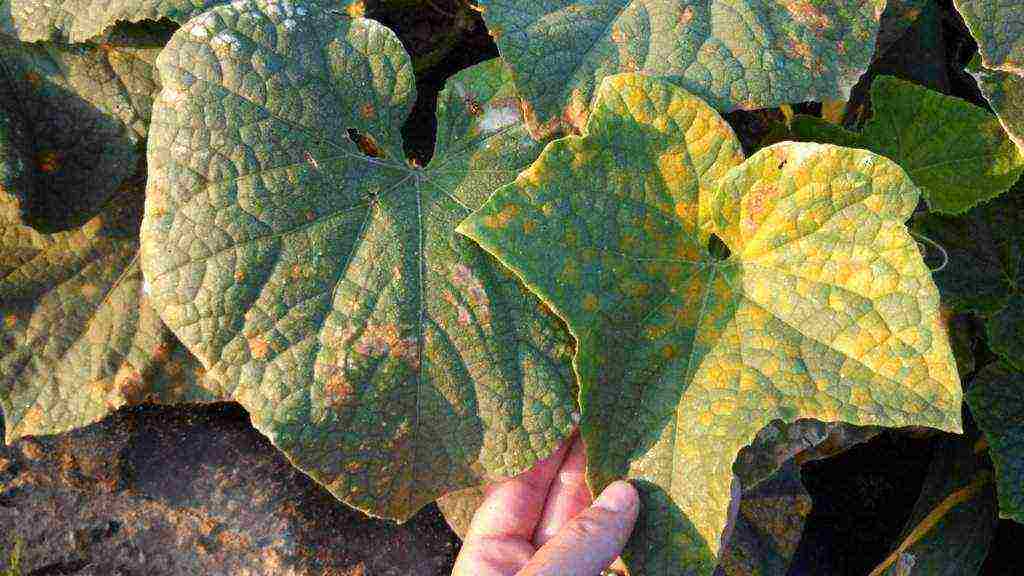
Butternut squash varieties, when properly cared for, reward the grower with a bountiful harvest. Fragrant fruits with a pronounced nutmeg taste are an excellent source of vitamins. In addition, pumpkin pulp is low in calories, therefore it is used in diet therapy.

